The 7 Best Foods for High Blood Pressure, According to a Dietitian
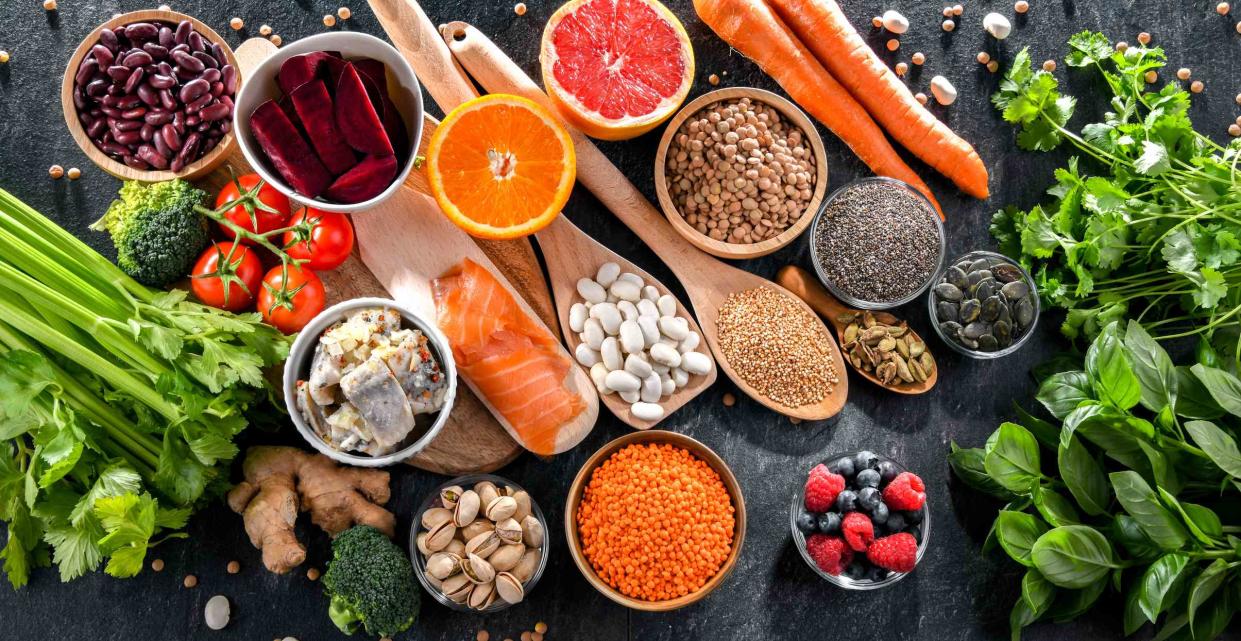
monticello / Getty Images
Medically reviewed by Kristy Del Coro, MS, RDN, LDN
High blood pressure, or hypertension, is a common risk factor for heart disease. More than 1 billion people worldwide have high blood pressure with even more individuals unaware they have the condition and go untreated.
High blood pressure is defined as a systolic blood pressure (or the top number) of 130 mmHg or higher and a diastolic blood pressure (or the bottom number) of 80 mmHg or more. High blood pressure is caused by a combination of environmental, pathophysiological, and genetic factors.
Medications, such as ACE inhibitors and calcium-channel blockers, are typically first-line therapy, along with lifestyle modifications. Nutrition plays a huge role in the prevention of heart disease and therefore can have a significant effect on preventing high blood pressure as well.
Related: Walking Workouts for High Blood Pressure
What Role Does Nutrition Play in Blood Pressure?
Nutrition plays a key role in preventing and controlling high blood pressure. Eating foods that contain nutrients can have a positive effect on blood pressure. The most recommended eating pattern for preventing high blood pressure is the DASH eating plan, or Dietary Approaches to Stop Hypertension. Designed to help you manage high blood pressure, DASH focuses on limited red meat, sodium, and added sugars with high amounts of vegetables, fruits, whole grains, fish, beans, nuts, and dairy products.
Additionally, foods high in potassium and magnesium help control blood pressure. Potassium and magnesium are key minerals for healthy blood pressure control as they help the walls of the blood vessels relax when the heart contracts.
7 Foods for Better Blood Pressure
There are a variety of different nutrients that help support a healthy heart and blood pressure. Some of these nutrients include fiber, omega-3 fatty acids, antioxidants, vitamin D, and important minerals such as calcium, potassium, and magnesium. With some planning, it's simple to fill your diet with nutritious and flavorful foods that will benefit your blood pressure. Here are a few evidence-based foods for better blood pressure.
Salmon and Other Fatty Fish
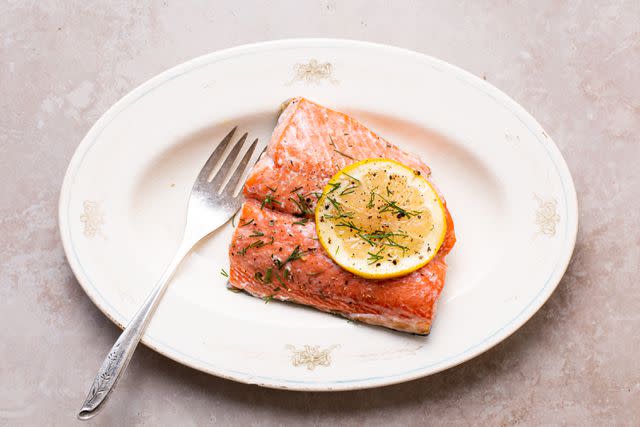
Verywell / Alexandra Shytsman
Salmon and other fatty fish like tuna, mackerel, sardines, and striped bass are high in omega-3 fatty acids, an essential nutrient that our body can't make. Omega-3 fatty acids help reduce blood pressure by decreasing inflammation. Inflammation in the body can lead to damage in the lining of blood vessels and cause arterial stiffness, which results in high blood pressure over time. According to a review article, to get the greatest benefit for lowering blood pressure, consume two to three grams of omega-3 fatty acids per day.
Nuts and Seeds
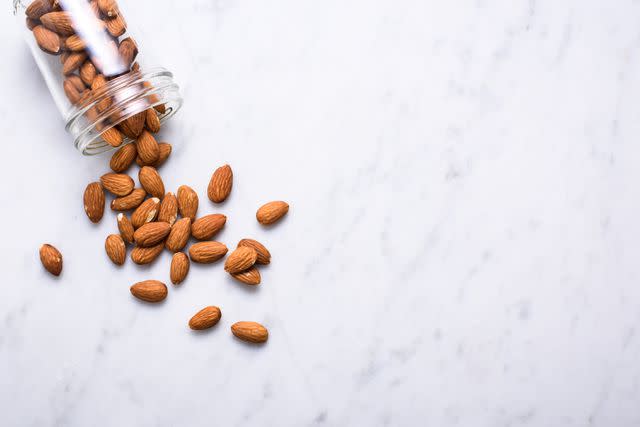
Verywell / Alexandra Shytsman
Nuts and seeds such as pumpkin seeds, flaxseed, chia seeds, pistachios, walnuts, and almonds, may have a positive effect on blood pressure. Nuts and seeds are a good source of fiber as well as a concentrated source of the amino acid arginine.
Arginine is needed to produce nitric oxide in the body, which is a compound important for blood vessel relaxation and blood pressure reduction. Nuts and seeds are also an excellent source of magnesium, which helps blood vessel walls relax, managing a healthy blood pressure.
Leafy Greens
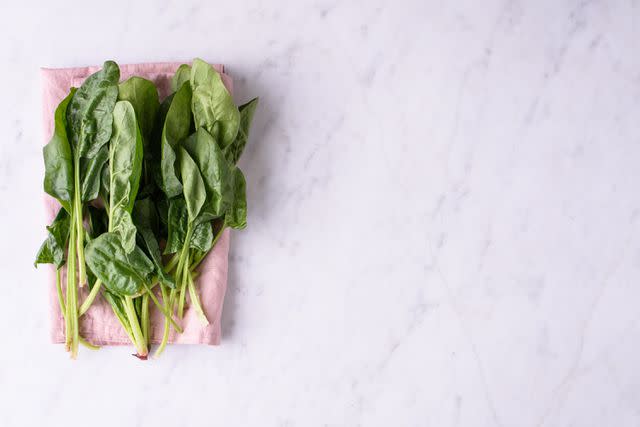
Verywell / Alexandra Shytsman
Leafy greens like Swiss chard and spinach are high in blood pressure lowering nutrients. These two greens are packed with potassium and magnesium. Additionally, spinach is high in nitrate, which may help lower blood pressure. In one small study, 27 participants ate 17 ounces of a spinach soup for seven days and experienced reductions in systolic and diastolic blood pressure.
Beets
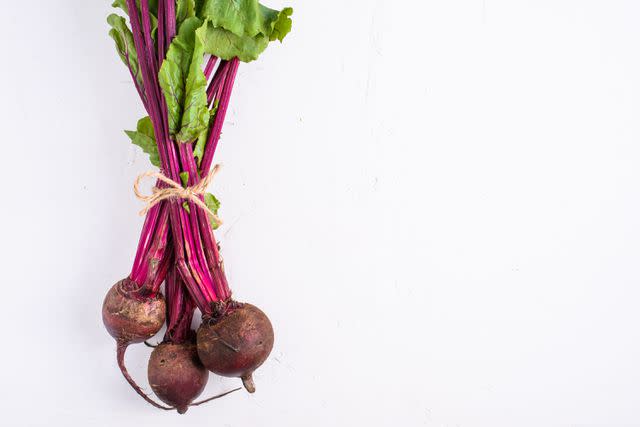
Verywell / Alexandra Shytsman
Beets are a powerhouse of nutrients when it comes to heart health and blood pressure. Their deep red color indicates that they are high in phytonutrients, antioxidants, and anti-inflammatory properties. Beets are also high in nitrates, which can help to increase blood flow and lower blood pressure.
Nitrates help the body take up more oxygen, lengthening the time it takes to become fatigued. One review study examined dietary supplementation with beetroot juice and found that it was a cost-effective strategy for reducing blood pressure in different populations.
Berries
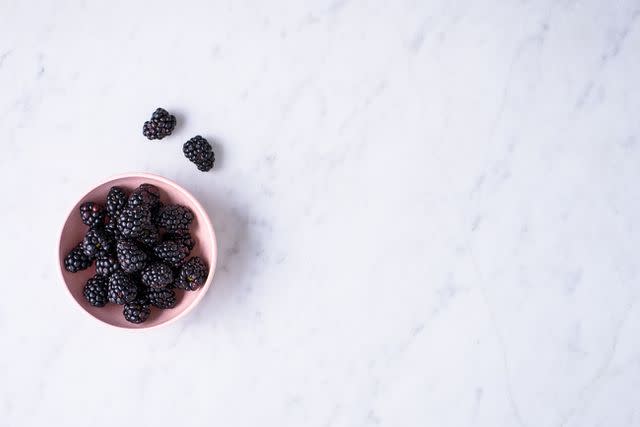
Verywell / Alexandra Shytsman
Berries are rich in antioxidants, including anthocyanins, which give them their vibrant color, and contribute to a decreased heart disease risk. Anthocyanins are important nutrients for lowering blood pressure as they increase nitric oxide levels in the blood and decrease the production of molecules that restrict blood flow.
Additionally, a review study looked at effects from different types of berries and forms, including whole berries, freeze-dried, and juice. Results indicated a three mmHg reduction in blood pressure. Interestingly, the strongest effect on systolic blood pressure was from cranberry juice.
Tomatoes
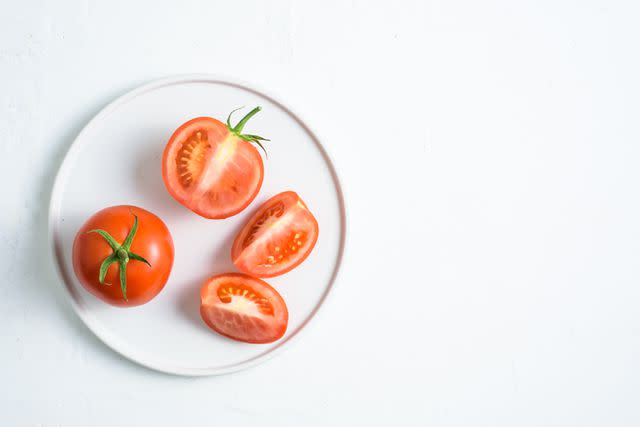
Verywell / Alexandra Shytsman
Tomatoes, as well as tomato products, are high in potassium and lycopene. Lycopene is an important carotenoid pigment extensively studied for its beneficial effects on heart health and potential to lower blood pressure by improving vascular function and reducing arterial stiffness. In addition, tomatoes are a good source of potassium, which plays a role in relaxing blood vessels and lowering blood pressure.
Yogurt
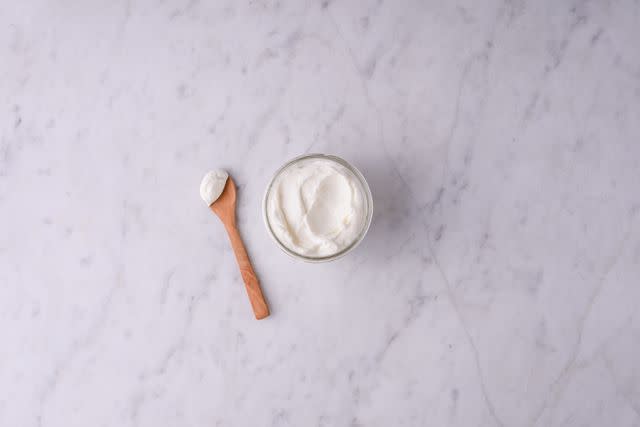
Verywell / Alexandra Shytsman
Yogurt is not only packed with protein but also rich in minerals that help regulate blood pressure, such as potassium and calcium. One review of 28 studies found that individuals who consumed three servings of dairy products per day had a 13% lower possibility of high blood pressure.
Another study showed that individuals who ate a serving of yogurt daily had lower systolic blood pressure levels. However, there was no change found in people who had normal blood pressure levels.
Related: The 9 Best Greek Yogurts of 2023, According to a Dietitian
How to Incorporate Blood Pressure-Lowering Foods Into Your Diet
Many of these foods are easily accessible and can be incorporated into your everyday meals and snacks. Consider speaking with a registered dietitian for individualized advice and guidance to help you meet your specific nutrition goals and needs. Here are a few tips for how to eat more blood pressure-lowering foods.
Make a yogurt bowl. Create easy and satisfying yogurt bowls for breakfast or snacks with high-protein Greek yogurt and toppings of your choosing. Add foods like berries, chia seeds, nuts, and pumpkin seeds.
Swap in fatty fish. Try eating more fatty fish by swapping it in where you might otherwise eat chicken, turkey, or meat. Roast salmon for a quick weeknight dinner. Then, take the leftovers and add them to a salad, or make a salmon wrap for lunch.
Sneak in leafy greens. Incorporate more leafy greens by blending them into smoothies and sauces. This is a great way to get an extra dose of veggies where you might not have had them in the first place.
Prep salads. Fresh salads are an excellent way to get in veggies like tomatoes and beets. Top them with some pistachios and feta cheese for even more benefit.
Related: 10 DASH Diet Recipes to Help Lower Blood Pressure
All foods fit into a healthy and balanced diet—even with high blood pressure. There are no foods you need to avoid. However, some foods can help manage high blood pressure and prevent heart disease. Always consult a healthcare provider for specific questions and individualized recommendations.

